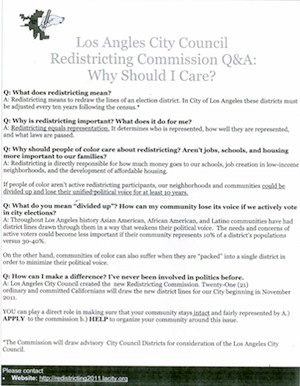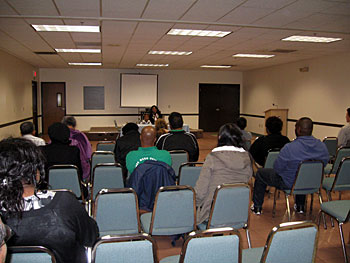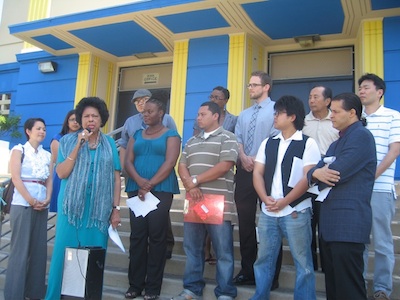 Attorney Leo Terrell filed a lawsuit in federal court on behalf of residents in the 8th, 9th and 10th Council Districts, alleging that city officials used race as the basis for redrawing boundary lines for those districts.
Attorney Leo Terrell filed a lawsuit in federal court on behalf of residents in the 8th, 9th and 10th Council Districts, alleging that city officials used race as the basis for redrawing boundary lines for those districts.
Terrell accused the City Council of redrawing the boundaries to create a predominantly African American voting bloc in the 10th District represented by Council President Herb Wesson, who is African American. Many of the black neighborhoods represented by 8th District Councilmember Bernard C. Parks, who is also African American, were taken out of the 8th and put into Wesson’s district.
Parks has said moving those neighborhoods out of the 8th District has been economically disastrous for his district.
“Over the last two years we were leading the city in creating jobs, but the 30,000 jobs were taken out just by the drawing of a line. This community leads the city in homelessness, unemployment and foreclosures,” Park recently told Crenshaw Chamber of Commerce.
In a news release, Terrell said,” Key Redistricting Commission and City Council members redrew the City Council district boundaries, with the explicit purpose of increasing the African American voter registration percentage in District 10, and increasing the Latino voter registration percentage in District 9.”
District 9 is now represented by Jan Perry, who is African American. Perry is termed out and running for mayor of Los Angeles.
Terrell also points to how redistricting “diluted the voting power of the Asian American community” by breaking up parts of Koreatown and Downtown Los Angeles and moving them into other districts. The redistricting commission moved much of the downtown neighborhoods out of District 9, leaving it with mostly low-income neighborhoods in South Central Los Angeles. Voters will be electing a new city council member in District 9 on Tuesday.
“Shame on this city when minorities disenfranchise minorities,” Terrell told the Los Angeles City Council today.
Councilmember Herb Wesson did not comment on Terrell’s lawsuit.



















